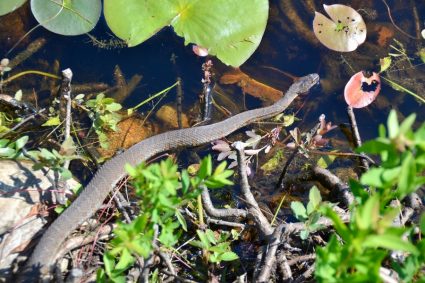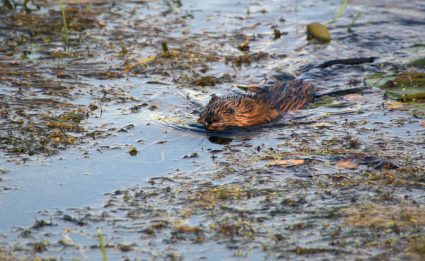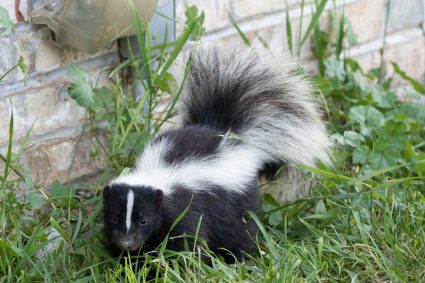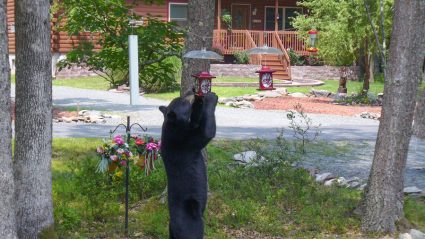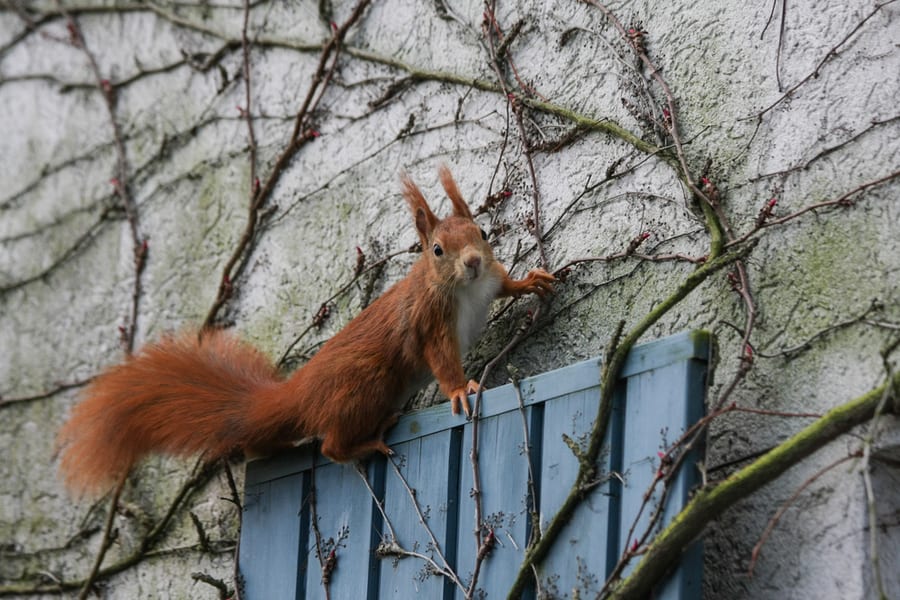
Squirrels often make sounds to communicate and protect their species and nests. However, because all rodents make similar sounds, it can be tasking to differentiate a squirrel’s sound from those of other rodents.
But are there any ways to identify squirrel sounds in walls conclusively? Emphatically, yes!
In this guide, we will consider some sure pointers you can use to confirm if the noise in your walls is from squirrels.
Squirrels are agile animals that make hard-to-miss scratching and screeching sounds. The kind and intensity of the sound they make depend primarily on their age, gender, and situation.
- Baby squirrels make soft, muted, almost inaudible sounds similar to faint crying or squeaking. The intensity of their sounds increases as their vocal cords mature.
- Adult squirrels are much noisier than their offspring. As with other rodents, they are likely to gnaw on different objects, producing a scraping sound.
Besides their sounds, other telltale signs indicating a squirrel infestation include strong foul odors, visible chew marks, damage, etc.
In this article, we will discuss the various sounds squirrels make in walls and identify other telltale signs that can indicate a possible infestation. Afterward, we will answer other common questions about squirrel infestation in homes.
How To Identify Squirrel Sounds in Walls

A sound in the walls can mean almost anything, from construction noise to rodents trying to make a home. But the consistency of the sounds you hear can narrow down the options and suggest what exactly you are dealing with.
Construction sounds are somewhat mechanical and very loud. But scratching and other erratic noises are more consistent with animal activities.
For example, squirrels make urgent, scratching noises accompanied by other vocal sounds. The kind of sounds squirrels make in walls depends on whether it is a baby squirrel or an adult one.
In the following sections, we will tackle these sounds and differentiate between them.
What Do Baby Squirrels Sound Like?
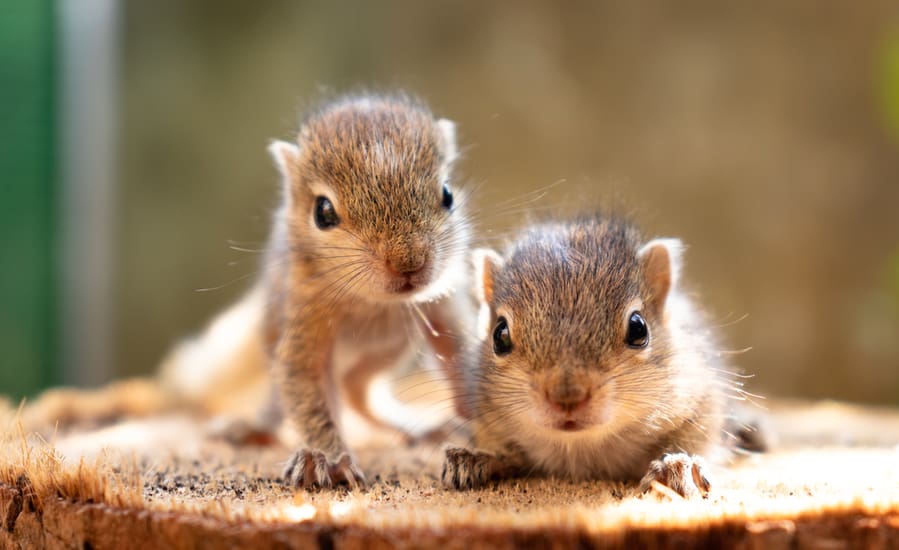
Generally, baby squirrels make soft, muted, almost inaudible sounds, similar to faint crying or squeaking. However, the intensity of these sounds depends on their age, as their vocal cords mature with time.
The reason why baby squirrels sound almost inaudible is they avoid attracting predators since they cannot defend themselves. Squirrels are born blind and cannot survive independently for a few weeks after birth.
Thus, their muted vocal cords keep them largely invincible and protected from harm. At a few days old, baby squirrels make muted squeaks, signaling their hunger to their mother.
As the week progresses, they graduate to low growls. At a month old, they can make short screams.
When alarmed or in potential danger, these baby squirrels can release an ear-splitting cry which reaches their mother faster.
Overall, baby squirrels sound like tiny birds with similar chirps and high-pitched screams.
What Do Adult Squirrels Sound Like?
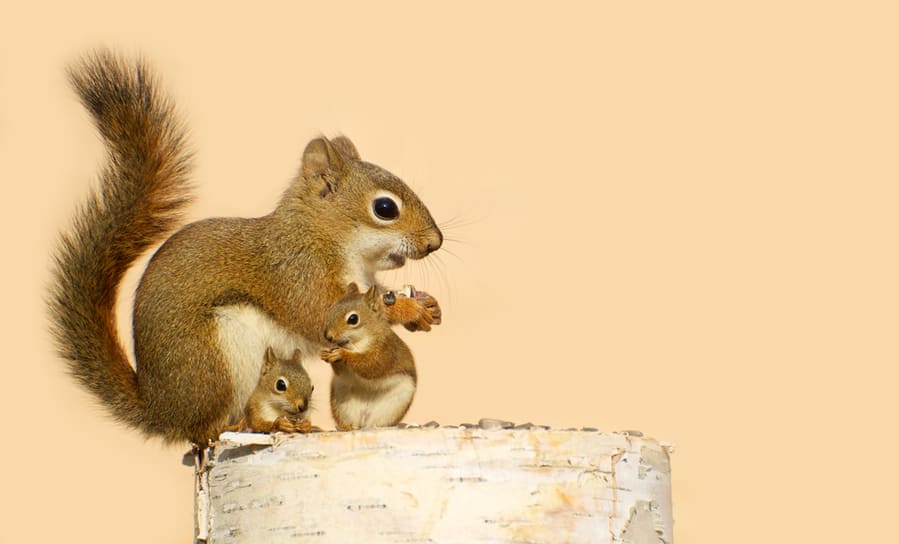
Adult squirrels are much noisier than their offspring. As with other rodents, adult squirrels are likely to gnaw on different objects, producing a scraping sound.
Their sounds may vary since they may be from different species. More than 200 identified squirrel species exist.
Some of the most common squirrel varieties are the tree, ground, and flying species.
Some species are louder than others, and each has unique sounds with different meanings. The intensity of these sounds depends on the situation at hand, the squirrel’s gender, and age.
While one specie may cry when injured, another may cry while fighting for food. But, when communicating among themselves, squirrels tend to make high-pitched bird-like noises that humans can hear.
They can also make ultrasonic noises at a too-high frequency for the human senses to pick up. Thus, squirrels can alter their sound pitches to adjust to specific moods and situations.
How To Identify Squirrels in Your Walls

You will likely hear squirrel sounds in the early and late hours of the day. These are the times when these rodents are the most active, entering and leaving the house.
Due to their size, these sounds can be pretty loud, featuring scratching, barking, gnawing, and scampering. However, these sounds are characteristic of other small pests like mice too.
So, do not rely on sounds alone to determine what may be hiding in your walls. You may have to conduct a thorough inspection to verify.
Why Do Squirrels Make These Sounds?

Like other animals, squirrels use sounds to communicate and protect their species and nests. For example, crying is often a distress call for squirrels.
Squirrels can cry when in pain, when hungry, and when informing others of impending danger. They screech or make rattling sounds when faced with an intruder.
The sound is a warning or threat to the intruder not to cross their boundary. This is typically followed by teeth chattering to show hostility.
If the intruder ignores these signals and crosses their border, they may proceed to attack and bite.
Another common squirrel sound is the bark, which is their alarm call. Alarm calls are common when one squirrel spots an intruder and needs to warn the others.
The barking calls are short sounds released from their nostrils that may sound like a buzz. Its intensity can differentiate whether the predator is a land animal or airborne.
Warning calls are typically followed by vigorous tail wagging and stomping of feet.
Finally, squirrels have distinct mating noises. During mating season, the male species mimic the soft sounds of baby squirrels when chasing after female squirrels.
This low-intensity sound is to signify that he is not a threat. In response, female squirrels make a similar soft sound to indicate readiness for mating.
Hearing these sounds in your walls or attic is troubling, especially if you do not know what they mean. However, to effectively interpret the sounds, you must pay close attention.
A light scurrying sound accompanied by scratching indicates that squirrels have gained entry into your house. Rolling sounds indicate they are gathering nuts and other food to store in your building.
Any other rustling or squeaking sound you hear is the squirrels making themselves comfortable. As highly active animals, they are always up to something. They are either building a nest, trying to initiate mating, or storing food.
However, these rodents become scared easily. Simply banging on your walls can send them scurrying in another direction.
5 Signs of Squirrels in Your Walls
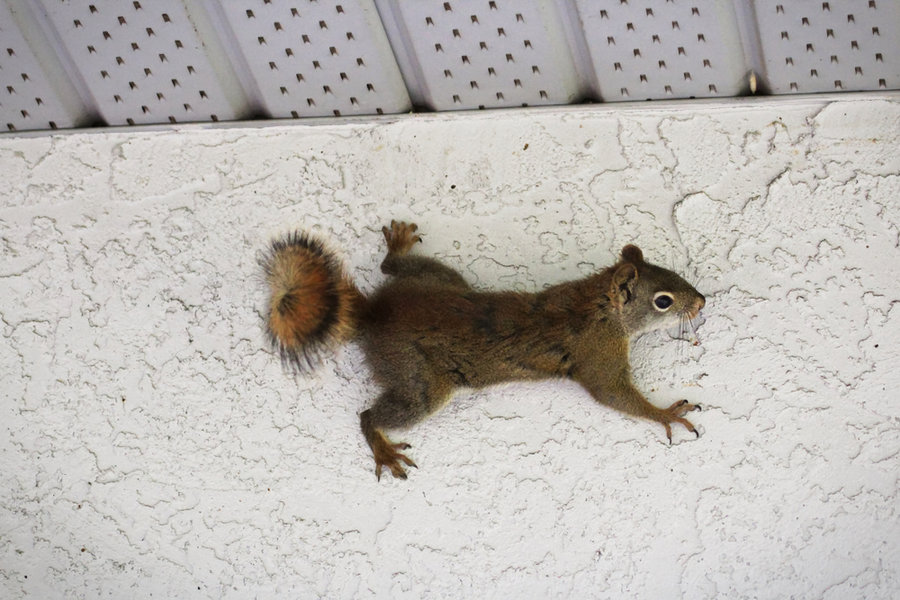
As we said earlier, rodents make similar sounds. For this reason, many find it challenging to tell which rodent is infesting their house exactly.
Thankfully, there are a few signs that distinguish squirrels from other animals. Their first and commonest hideouts are inside walls.
If you notice any of the five signs below, you can be sure you have a squirrel infestation at hand to handle.
1. Visible Squirrel Droppings

Once you hear constant scratching sounds, search the area for telltale signs of squirrel presence. One of these signs is their droppings in wall cavities or on the floor.
These droppings resemble rat poop — large, oval, and brown droppings. The difference between the two is that rat poop has a more pungent smell.
However, once you notice these droppings in your house, do not hesitate to invite pest control specialists to look at them. These professionals have the right skills to correctly identify what these droppings mean and can help manage the situation.
2. Chew Marks and Visible Damage
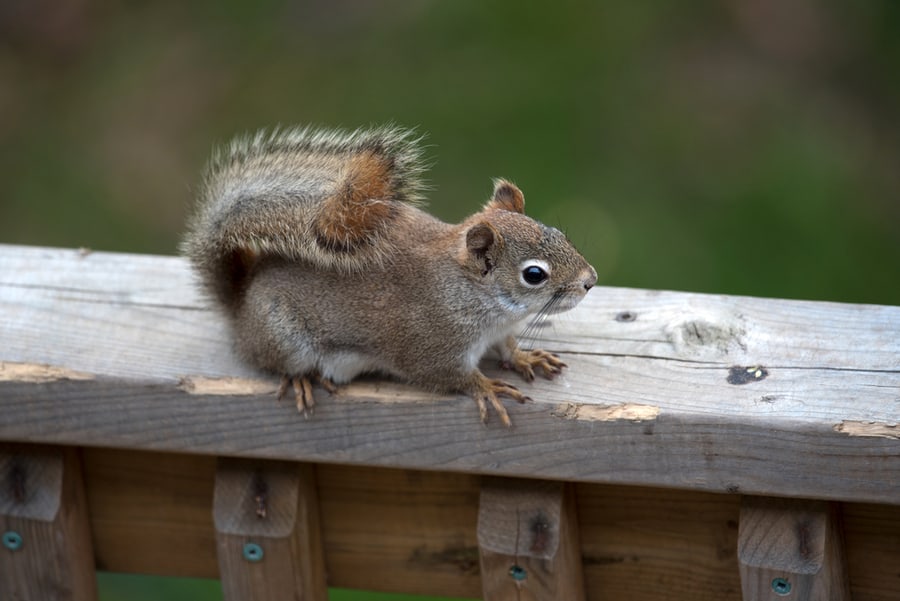
You may not easily spot squirrel signs from inside your house. This is because they are cooped up in the attic or walls.
However, a routine inspection of your house’s exterior may reveal some telltale signs. One of these is visible chew marks and the accompanying damage.
Like mice, squirrels can gnaw through almost anything — metal, wood, insulation, etc. Their teeth are particularly strong, and the damage they cause is different from other predators.
Look for chewed tree barks or outdoor plants, gnaw marks on paneling and bird feeders, and scattered garbage. Finding insulation or woodchips in places where they should not be is another sign of a possible squirrel infestation.
Done with the outdoors? You could also run a few checks inside the building.
Possible signs of damage inside your house may include chew marks on walls or electric wiring. You may even find nests hidden in your walls and damaged air vents.
Interior damage poses more risks because squirrels can create a fire hazard.
As you probably know, chewed electric wires can create a fire hazard. If you notice chewed electric cables in your house, invite an electrical technician to inspect and tidy them up immediately.
A delayed response can lead to a major fire incident in your building.
3. Strong Foul Odors

When squirrels chew their way into a house, getting out may be difficult for many of them. Some may even get stuck in your walls.
If they are young squirrels that cannot navigate their way out independently, they can die there, undetected. The smell of their decaying carcass can infiltrate your home, causing it to smell foul. Other factors that contribute to this strong smell are urine and droppings.
The longer these waste products and dead squirrels stay in your house, the more pungent the smell. So, the logical thing to do is to call wildlife technicians to handle the problem.
4. Visible Squirrel Tracks
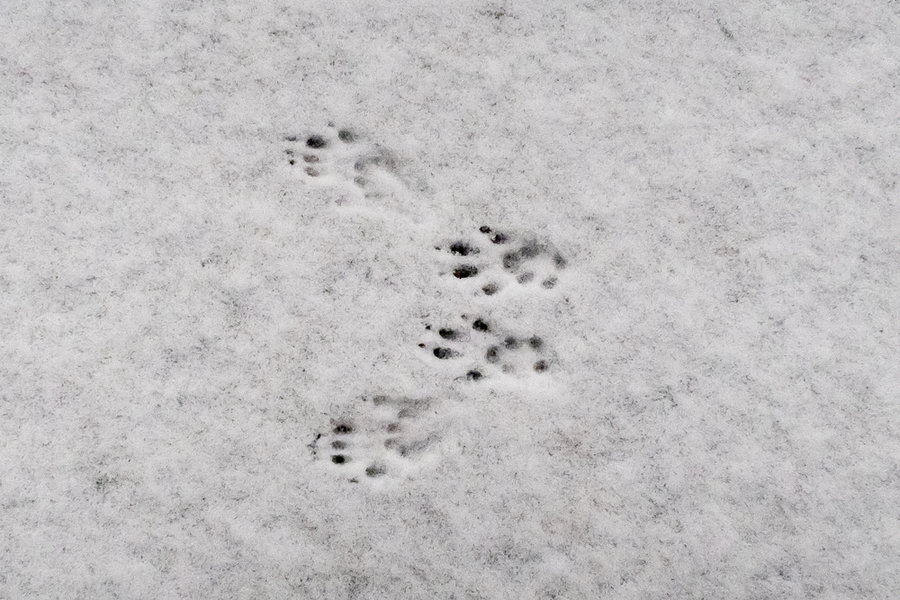
Squirrels are not hard to miss, and you can find them leading up to hidden nests within your house. Their footprints resemble their paws, with four short fingers on their front paws. Their hind feet are a bit longer than the front ones, and they have five fingers.
These tracks are more noticeable in the snow or after it rains. You may find them around your garage, patio, deck, or attic. Once you spot these footprints, know that these unwanted visitors are in your house.
5. Lurking Squirrels
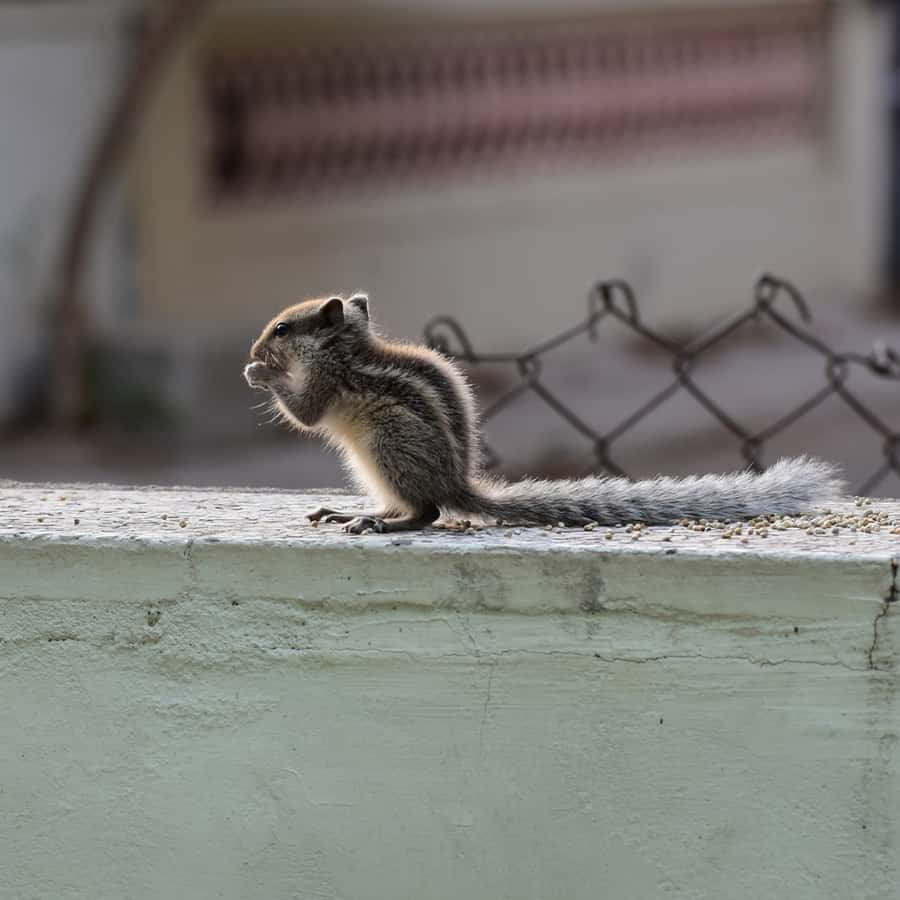
If you spot squirrels hanging around your house, it could mean that you have an infestation problem on your hands. They may try to run into your shed or chew their way into your home when you are not looking.
Trash cans stored outside may be one of the factors attracting squirrels to your building. So, think of better ways to keep your garbage to avoid attracting these pests.
Watch out for signs of a growing squirrel population in your environment. If you see many squirrels running up trees, fences, roofs, and power lines, then there may be a problem.
In that case, take precautionary steps to keep the squirrels at bay from your house. Even if they are not yet infesting your home, they will with time if you don’t take prompt action.
Conclusion
Squirrels are agile animals that make hard-to-miss scratching and screeching sounds. Although they may seem cute initially, squirrels are not the animals to have at home with you.
Their signature scratching sounds on walls often indicate that they have entered your house.
Besides their sounds, we discussed other telltale signs of the infestation of these rodents. These include foul odors, visible chew marks, and damage. Others signs you may want to watch out for are their droppings and tracks.
Unlike other small pests, squirrels are not animals you want to take on alone. We recommend you to report the situation to wildlife removal experts who can permanently remove these animals from your house.
Frequently Asked Questions
Why Do Squirrels Make Seething Sounds?
Seething sounds are warning signals squirrels release to warn their kind about airborne predators.
Why Do Squirrels Stomp Their Feet?
The stomping of feet means that the squirrel is on alert and is ready to attack and fight a predator.


